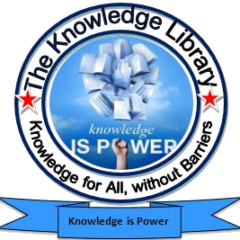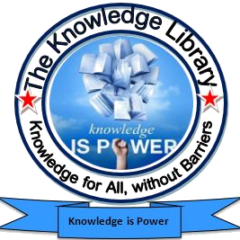Ques 1. Which of the following is not a font style?
(a) Bold
(b) Manuscript
(c) Italic
(d) Regular
(e) None of the above
Answer: Option b
Explanation:
The manuscript is not a font style. We write commonly manuscripts in a font style called Times Roman. Other font styles in options such as Bold, Manuscript, Italic, and Regular are common font styles used. If the manuscripts are to be submitted for publication we shall use clear sans serif texts like Arial, Calibri or Tahoma.
Ques 2. Gutter margin: What is it?
(a) Margin that is added to the right margin when printing
(b) Margin that is added to the left margin when printing
(c) Margin that is added to the outside of the page when printing
(d) Margin that is added to the binding side of the page when printing
(e) None of the above
Answer: Option d
Explanation:
A gutter margin enlarges the top, inside, and side margins of a document that you intend to bind. A gutter margin ensures that the binding won’t cover the text.
Ques 3. What is a Landscape?
(a) A font style
(b) Paper Size
(c) Page Layout
(d) Page Orientation
(e) None of the above
Answer: Option d
Explanation:
Horizontal subjects or a canvas that is broader than it is tall are also considered landscape orientations.
Ques 4. Which menu will include a typeface option?
(a) Edit
(b) View
(c) Format
(d) Tools
(e) None of the above
Answer: Option c
Explanation:
The format menu will come under the typeface option. Although the terms “typeface” and “font” are frequently used interchangeably, “font-family” is a better term to use to describe a collection of typefaces with a typeface. Official names for typefaces include Comic Sans, Garamond, and Helvetica.
Ques 5. A document’s background colour cannot be seen in?
(a) Web layout view
(b) Print Preview
(c) Reading View
(d) Print Layout view
(e) None of the above
Answer: Option b
Explanation:
A document’s background colour cannot be seen in Print Preview. The creation of an image or design for the Print Preview simply allows the user to see how the document will look when printed.
However, it won’t show the document’s background colour.
Ques 6. What part of a document may you define specific formatting settings for the pages in?
(a) Page Setup
(b) Section
(c) Page
(d) Document
(e) None of the above
Answer: Option b
Explanation:
The section is the part of the document where we define certain specific formatting settings for the pages. We can do section breaks from the page option where the document depending upon the need for even odd pages can be broken into sub-sections.
Ques 7. Which of the following options is absent from the MS Word Ruler screen?
(a) Tab stop box
(b) Left Indent
(c) Right Indent
(d) Center Indent
(e) Tab start box
Answer: Option d
Explanation:
The Ruler screen in MS Word does not have a Center Indent option. By enabling you to divide information, the indenting text gives your document structure. You can set tabs and indents using the horizontal ruler and tab selector, whether you want to move a single line or an entire paragraph.
Ques 8. Which of the following positions can be set in the Gutter position?
(a) Left & Right
(b) Left & Top
(c) Left & Bottom
(d) Left Only
(e) None of the above
Answer: Option b
Explanation:
Gutter positions can be set in Left and Top positions. Following is the set-up:
Go to Margins under Layout.
Choosing Custom Margins
Enter the gutter margin’s width in the Gutter box.
Click Left or Top in the Gutter position box.
Ques 9. What shortcut key is used for line breaks?
(a) CTRL + Enter
(b) Alt + Enter
(c) Shift + Enter
(d) Space + Enter
(e) None of the above
Answer: Option C
Explanation:
The quick shortcut key for a manual line break is Shift+Enter. Use a keyboard shortcut to add a new line to add space between text lines or paragraphs in a cell. Select where you want the line to be broken by clicking there. Inserting a line break requires pressing Shift+ENTER.
Ques 10. Which of the following will happen when you press F12?
(a) Save As dialog box will open
(b) Save dialog box will open
(c) Open dialog box will open
(d) Close dialog box will open
(e) None of the above
Answer: Option a
Explanation:
The Save As dialogue box will appear after pressing F12. The shortcut key to access the Open dialogue box is Ctrl + O. Microsoft Office frequently uses the F12 function key. F12 can be used to save a workbook, slide show, or document to a different location or with a different name.
Ques 11. What key will activate the “Open” dialogue box?
(a) F12
(b) Alt + F12
(c) Ctrl + F12
(d) Shift + F12
(e) None of the above
Answer: Option C
Explanation:
The shortcut key to access the Open dialogue box is Ctrl + O. Microsoft Office frequently uses the F12 function key. For the underlined characters to appear in some apps, the user must hold down the Alt key. You can see that some of the common functionality, like Open (Ctrl+O) and Save (Ctrl+S), have shortcut keys allocated to them in the image above.
Ques 12. How does MS Word react to repeated words?
(a) A green wavy line next to the word that is repeated
(b) A red wavy line with a repeating word in it
(c) Under the repeated word, a blue wavy line
(d) A yellow wavy line beneath the word that is repeated
(e) None of the above
Answer: Option b
Explanation:
When there are repeated words in MS office then MS word has a reaction of a red wavy line with a repeated word in it. The red wavy line is automatically by default is installed in MS word. The red wavy line also indicates the misspelled word. We follow the following steps in order while making a red wavy line in words:
Click File> Options> Proofing to clear the spelling check typing box> CLicking Ok.
Ques 13. What does the MS-“All Word’s Caps” option do?
(a) It changes all selected text into Capital Letter
(b) It adds captions for selected Image
(c) It shows all the image captions
(d) All of the above
(e) None of the above
Answer: Option a
Explanation:
Instead, type =LOWER(A2) to make the text lowercase. When you need to change the text to uppercase, use =UPPER(A2), substituting A2 with the relevant cell reference.
Ques 14. Which file causes MS Word to launch?
(a) Winword.exe
(b) Win.exe
(c) Word.exe
(d) Wordwin.exe
(e) None of these
Answer: Option a
Explanation:
The right response is Winword.exe. When Word is launched, the executable file with the name winword.exe is used. WinWord is an acronym for Windows Word (Microsoft Word). By typing the command Winword in the Run window, we may start the Microsoft Word program.
Ques 15. Which functionality will we utilize to keep track of different editions of a document?
(a) editions
(b) versions
(c) tracks
(d) traces
(e) None of the above
Answer: Option b
The technique of managing various draughts and versions of a document or record is known as version control. It is a technology that keeps track of several draught documents before producing a finished product. It offers a revision and updated audit trail for these finalized versions.
Ques 16. Which is not a margin type?
(a) Top
(b) Left
(c) Right
(d) Center
(e) None of the above
Answer: Option d
Explanation:
Margin refers to the spaces on a paragraph’s top, bottom, left, and other sides. The Center is not a margin. The margin is the space between a page’s primary content and its edges.
Ques 17. What purpose does Ctrl + J serve?
(a) Insert Image
(b) Insert Hyperlink
(c) Align Justify
(d) Search file
(e) None of the above
Answer: Option C
Explanation:
Pressing Ctrl + J in Microsoft Word or another word processor will justify the current line, distributing the text or words between the left and right edges of the page.
Ques.18.) What quick fix will we employ to align the centre?
(a) Ctrl + A
(b) Ctrl + E
(c) Ctrl + D
(d) Ctrl + B
(e) Ctrl + R
Answer: option b
Explanation:
Use text-align: center; This text is centered to simply center the text within an element. Align selected text or a line to the center by pressing Ctrl + E.
Ques 19. How will we make text Italic using a keyboard shortcut?
(a) Ctrl + U
(b) Ctrl + T
(c) Ctrl + I
(d) Ctrl + P
(e) Ctrl + W
Answer: Option C
Explanation:
Italic text can be added by pressing Ctrl + I, where “I” stands for “italic.” This shortcut can be used to add italics to previously highlighted text as well as newly typed text.
Ques.20.) How can a Format printer be used more than once at a time?
(a) By Click on Lock Format Painter Icon
(b) Format Painter cannot be used multiple times
(c) By Double Click on the Format Painter Icon
(d) Both a and b
(e) None of the above
Answer: Option C
Explanation:
Double-click on the Format Painter button on the Standard toolbar. Then, pick the objects to which you wish to apply the formatting by clicking on each one individually or by selecting a region. NOTE: To close the Format Painter, use ESC or click the Format Painter button once again.


 Users Today : 315
Users Today : 315 Total views : 464024
Total views : 464024